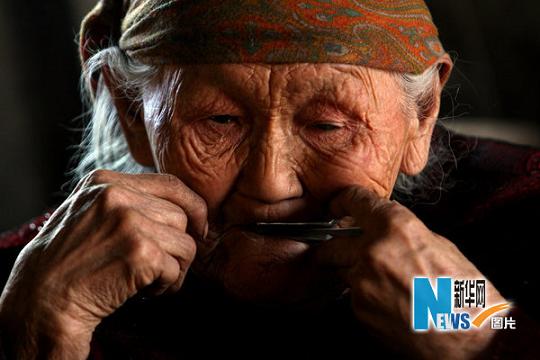 |
|
A photo of Maria Suo, the last female chief of an Ewenki tribe. [Photo/Xinhua] |
Shaman Dance is performed by shaman (sorcerers or witches) who pray to gods, sacrificing, dispelling evils and curing diseases. It is called Tiaodashen by common people. This form of dance was popular among northern Chinese tribes such as Mongolians, Manchus and Ewenkis, a result of primitive hunting, fishing and totem worshipping activities.
From the clothes, musical instruments and dance movements of shaman today, one can find traces of the original culture. Ewenki people always decorate their Shaman Dance clothes with animal bones or teeth; their musical instrument Zhuagu (a drum that can be held in the hand) is covered with animal skin and their performances imitate bears, hawks and deer.
In the past, to meet the demands of a hunting life, nomadic tribes lived dispersedly in yurts. Except for large carnivals, all dances were done within the yurt. Therefore, their dances are usually on a small scale. The dance style is straightforward and bold, with few steps. But the arm actions are powerful, and the wrist, shoulder and waist move briskly. In the dance, hawks, swans and horse riding are evoked, and the "Shaman Dance" which originate in religious ritual, is the most common type.